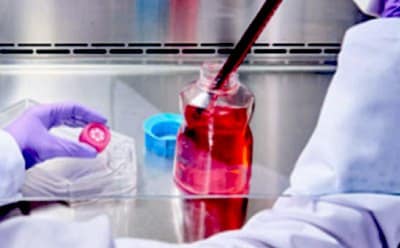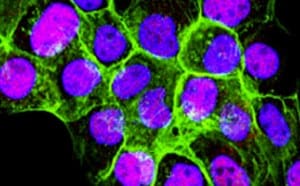Mammalian Cell Culture

Mammalian cell culture is an important tool for research, clinical, and pharmaceutical applications. Cells isolated from animal tissues can be expanded in culture to study cell biology and disease or used for the production of antibodies, proteins, and vaccines. Immortalized mammalian cell lines can be grown in vitro for prolonged periods and are commonly used as simple models for complex biology.
Featured Categories
We offer authenticated, contaminant-free cell lines, many in partnership with ECACC; critical tools for protein, antibody, virus, and vaccine production.
Essential for drug screening and ADME/Tox studies, our collection of primary cells includes blood, patient tumor xenografts, and hepatocytes.
Choose from a range of optimized cell culture media formulations, including DMEM, RPMI-1640, and serum-free options for diverse cellular needs.
Growing Mammalian Cells In Vitro
Cell growth requires a complex mixture of nutrients including sugars, amino acids, albumin, vitamins, minerals, and growth factors. Cell culture media supply these essential nutrients for in vitro mammalian cell culture. Mammalian cell cultures are grown in incubators that provide a sterile environment for growth at optimum temperature (37 °C) with 5% CO2 to maintain pH levels similar to that of mammalian blood.
Except for certain types of blood cells that can be cultured in suspension, most cells derived from mammalian tissues require adherence to a surface for proper cell division and growth. Cell culture surfaces are provided by treated polystyrene or glass flasks, plates, and filters designed for cell attachment. Cell attachment can be facilitated by using synthetic polymers such as poly-D-lysine (PDL) and extracellular matrix proteins including collagen that provide an attachment framework for adhesion.
Techniques in Mammalian Cell Culture
Aseptic techniques are used to prevent contamination of cells grown in vitro. Mammalian cell cultures require passaging or subculturing – which involves dilution of cells that have reached confluence and replacement of depleted culture media – for cell health and propagation. To passage adherent cell cultures, cells must be dissociated from culture surfaces using enzymatic methods such as trypsinization or mechanical methods such as scraping prior to transfer to new culture flasks or plates for re-attachment. Cell counting methods using hemacytometers and automated cell counters assess cell viability and help to determine seeding densities for passaging and proper cell densities for downstream processes. Cultured cells can be cryopreserved by storage in liquid nitrogen, from which seed stocks can be thawed when working stocks are needed again.
Visit our document search for data sheets, certificates and technical documentation.
Related Articles
- Extracellular matrix proteins such as laminin, collagen, and fibronectin can be used as cell attachment substrates in cell culture.
- Fibronectin (FN) plays crucial roles in extracellular matrix fibril assembly and cellular interactions.
- Learn more about the cell culture supplements human serum albumin (HSA) and recombinant human serum albumin (rHSA). Explore their applications in cell culture and beyond.
- Learn more about β-Alanine, an important amino acid supplement and explore how it is used in cell culture. We offer a comprehensive portfolio of amino acid cell culture supplements and reagents.
- Learn more about L-asparagine, an important amino acid supplement, and explore how it is used in primary and cancer cell culture. We offer amino acid cell culture supplements and reagents.
- See All (117)
Related Protocols
- View instructional videos and download User Manuals for Milli-Q® SQ 2Series lab water systems. You’ll be up and running in no time. Buy online systems, accessories, cartridges and services.
- This gelatin coating protocol for cell culture applications offers information regarding types of gelatin, surface coverage concentration, and tips for optimization.
- Coating surfaces with laminin for culturing cells requires specific conditions for optimal results. Protocols for coating coverslips to culture neurospheres and general cell culture are included.
- Adhere cells to solid substrates using poly-lysine, which enhances electrostatic interaction between negatively charged ions of the cell membrane and the culture surface.
- Dilute fibronectin for cell attachment, varying per cell type. Coating protocol, products, and FAQs provided.
- See All (23)
Find More Articles and Protocols
How Can We Help
In case of any questions, please submit a customer support request
or talk to our customer service team:
Email custserv@sial.com
or call +1 (800) 244-1173
Additional Support
- Chromatogram Search
Use the Chromatogram Search to identify unknown compounds in your sample.
- Calculators & Apps
Web Toolbox - science research tools and resources for analytical chemistry, life science, chemical synthesis and materials science.
- Customer Support Request
Customer support including help with orders, products, accounts, and website technical issues.
- FAQ
Explore our Frequently Asked Questions for answers to commonly asked questions about our products and services.
To continue reading please sign in or create an account.
Don't Have An Account?


